Embarking on the journey to establish a thriving watch repair business can be both exciting and rewarding, particularly in an industry where precision, craftsmanship, and timeless elegance reign supreme.
With the potential for profitability driven by the evergreen demand for watch maintenance and restoration services, this unique industry presents its own set of challenges and opportunities that set it apart from other ventures.
In this comprehensive guide, we’ll discuss a couple of things you need to know about watch repair.
Your horological adventure begins here – let’s unravel the mysteries of timekeeping and master the art of watch repair together!
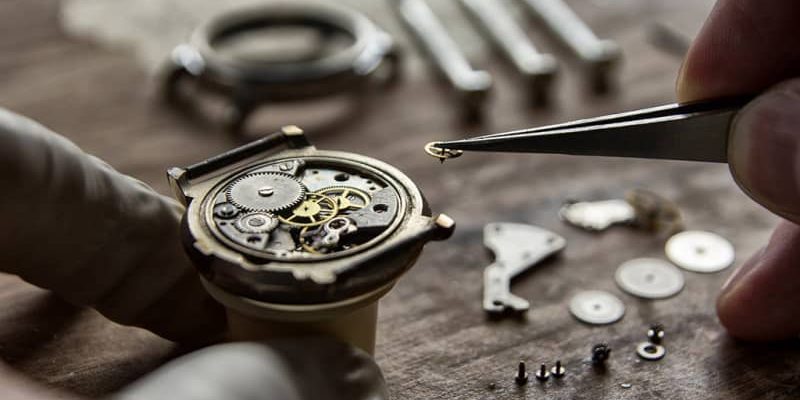
The case is the protective outer shell that houses the watch’s internal components and is crucial for both aesthetic appeal and durability.
Cases can be made from a variety of materials, each with its own set of benefits and suitability for different types of watches.
Common materials include stainless steel, gold, titanium, and plastic.
Highly popular due to its affordability, stainless steel is a corrosion-resistant alloy that offers durability and strength.
316L stainless steel is the industry standard alloy commonly used in various applications including watches, the food industry, the medical field, and water and marine environments.
It is known for its resistance to rust and corrosion, hence its popularity.
In the watch community, Rolex stands out for its use of 904L steel, which it introduced in 1985, making it the first wristwatch manufacturer to adopt this grade.
Rolex selected 904L steel for its enhanced polishability and superior corrosion resistance, although it is more challenging to machine and requires specialized equipment for shaping.
Apart from watches, 904L steel finds extensive use in high-tech, aerospace, and chemical industries due to its exceptional anti-corrosion properties comparable to precious metals.
Rolex, in its pursuit of quality, fully controls the entire manufacturing process of its 904L steel watch components.
The key difference between 316L and 904L lies in the higher nickel and chromium content, as well as the inclusion of copper in 904L.
Those with nickel allergies may prefer titanium watches, although both 316L and 904L contain nickel.
Furthermore, if you desire a shinier finish, the elevated chromium levels in 904L steel will likely be more appealing to you.
It is ideal for everyday watches and those designed for sports or outdoor activities.
Lighter and stronger than stainless steel, titanium is a hypoallergenic material that is perfect for individuals with sensitive skin or allergies to certain metals.
Its lightweight nature makes it suitable for sports watches, aviation watches, and other timepieces where reduced weight is desirable.
A classic choice for luxury watches, gold offers an unmistakable sense of prestige and elegance.
Available in various colors (yellow, white, and rose), gold cases are often reserved for dress watches and high-end timepieces.
As one of the rarest and most valuable metals, platinum is used in the most exclusive luxury watches.
It is extremely durable and resistant to tarnishing, making it an excellent choice for heirloom timepieces and high-end collectors’ items.
The dial, also known as the face of the watch, displays the time and any additional features such as date or chronograph functions.
Dials can be crafted from various materials, including metal, enamel, mother-of-pearl, and even precious stones.
The choice of material can influence the overall aesthetic of the watch, with some dials featuring intricate designs or patterns that add visual interest and enhance the watch’s appeal.
The pointer, commonly referred to as the hands of the watch, indicates the hours, minutes, and sometimes seconds on the dial.
They can be made from materials such as brass, stainless steel, or even gold, and are often coated with luminescent paint to improve visibility in low-light conditions.
The style and design of the pointers can vary widely, from simple stick hands to more elaborate shapes, depending on the watch’s overall design.
The movement is the heart of the watch, responsible for keeping time and powering any additional complications.
There are two primary types of movements: mechanical and quartz.
Mechanical movements are powered by a mainspring and consist of numerous gears and components that work together to regulate the watch’s timekeeping.
Quartz movements, on the other hand, are battery-powered and use a vibrating quartz crystal to maintain accurate timekeeping.
The choice between mechanical and quartz movements depends on personal preference, budget, and desired level of maintenance.
Spring parts play a crucial role in the function of mechanical watches. The mainspring, which stores energy when wound, powers the watch by gradually releasing its tension.
The balance spring, also known as the hairspring, works in conjunction with the balance wheel to regulate the watch’s timekeeping.
These delicate components require precision engineering and are typically made from materials such as Nivarox or silicon, which offer enhanced stability and resistance to temperature changes and magnetic fields.
Gears are essential components within the watch movement, responsible for transmitting power from the mainspring to the various components that control timekeeping and complications.
Typically made from brass or other durable metals, gears must be precisely manufactured and assembled to ensure smooth operation and accurate timekeeping.
In high-end luxury watches, gears may be hand-finished or decorated to showcase the watchmaker’s skill and attention to detail.
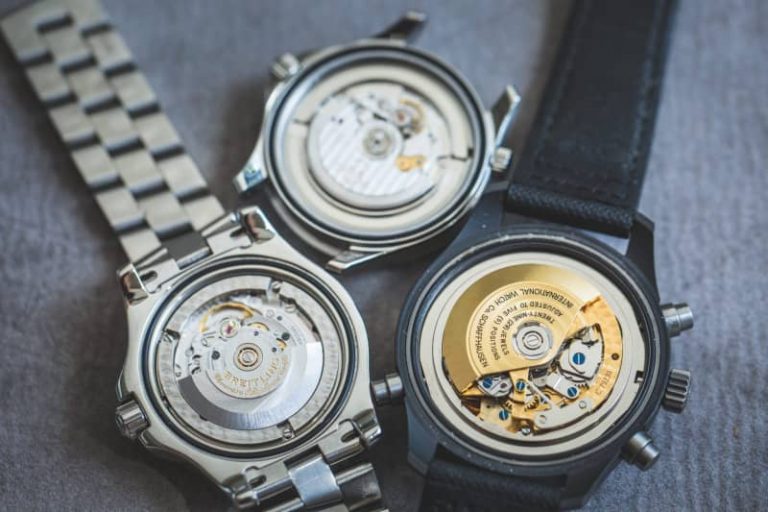
Broadly speaking, clock movements can be categorized into two primary types: mechanical and electronic.
Mechanical movements have stood the test of time as the esteemed heartbeats of traditional timepieces, dating back to the 18th century.
These exquisite mechanisms form the backbone of watches, employing a mainspring as their energy source to power the intricate inner workings.
Through a delicate interplay of gears, levers, and other meticulously crafted components, these movements ensure precise and accurate timekeeping.
Renowned for their craftsmanship and artistry, mechanical movements embody the pinnacle of watchmaking excellence and are often associated with luxury timepieces.
They can be further classified into three main categories:
Whether marveling at the intricate gears or appreciating the mechanical symphony within, mechanical movements offer a captivating blend of tradition, engineering prowess, and timeless elegance.
Weight-driven mechanical movements, also known as weight-driven clocks, showcase the fascinating fusion of mechanical engineering and horological artistry.
These captivating timekeeping devices rely on the force of gravity to power their intricate mechanisms.
A system of weights, typically in the form of heavy brass or iron discs, provides the energy needed to drive the clock’s gears, levers, and escapement.
As the weights gradually descend, the stored potential energy is converted into mechanical motion, orchestrating the precise measurement of time.
These clocks often feature a pendulum or a balance wheel as the regulating element, ensuring accurate and consistent timekeeping.
Weight-driven mechanical movements are renowned for their mesmerizing visual appeal, with the gracefully swinging pendulum or the rhythmic oscillation of the balance wheel adding an enchanting charm to any space.
These captivating timepieces, reminiscent of a bygone era, offer a glimpse into the mastery of clockmaking craftsmanship and serve as a reminder of the ingenuity and artistry of mechanical engineering.
Spring-driven clocks are a type of mechanical clock movement that utilizes the force of a tightly wound spring to power its intricate inner workings.
As the energy stored in the mainspring gradually unwinds, it drives a complex system of gears, levers, and escapement components which ultimately regulate timekeeping accuracy.
These captivating mechanisms have been around since the 17th century and remain popular today for their mesmerizing visual appeal and timeless elegance.
From traditional wall clocks to luxury wristwatches, spring-driven clocks offer an enchanting blend of engineering prowess, craftsmanship, and horological artistry.
Electronic movements revolutionized the world of timekeeping with their precise and reliable functionality.
Unlike traditional mechanical movements, electronic movements rely on electronic components, such as quartz crystals and integrated circuits, to measure and regulate time.
Quartz electronic movements, commonly found in quartz watches, employ the natural oscillations of a quartz crystal to ensure accuracy.
When an electric current is applied to the crystal, it vibrates at a specific frequency, generating a precise time reference.
These vibrations are then converted into regular electrical impulses, which drive the watch’s timekeeping mechanism.
Electronic movements offer several advantages, including exceptional accuracy, low maintenance requirements, and affordability.
They are also responsible for the proliferation of digital displays, allowing for easy readability and additional features like timers and alarms.
Moreover, electronic movements have paved the way for advancements in smartwatches, integrating sophisticated functionalities such as fitness tracking, notifications, and connectivity with other devices.
With their technological precision and versatility, electronic movements continue to shape the modern landscape of timekeeping, offering a fusion of convenience and precision.
Quartz movements employ a vibrating quartz crystal to maintain timekeeping.
Quartz movements are renowned for their robust accuracy, making them an ideal choice for timekeeping applications where precision is paramount.
Unlike mechanical movements, quartz movements do not rely on the force of gravity or the tension of a mainspring to drive their mechanisms.
Instead, they use an electronic oscillator in the form of a quartz crystal to regulate the movement’s inner workings.
When an electric current is applied to a quartz crystal, it vibrates at a specific frequency and generates regular electrical impulses which drive the watch’s timekeeping mechanism.
This electronic signal remains stable and consistent even under varying temperatures and pressure levels, making it possible to achieve extremely precise timekeeping accuracy up to 0.001 seconds per day.
In addition to its exceptional accuracy, quartz movements also require very low maintenance compared to mechanical movements and are relatively affordable.
Their compact size also allows for a greater variety of designs and shapes, making modern watches more visually attractive as well as functionally useful.
The introduction of quartz movements has revolutionized horology, allowing for technological advances like digital displays and sophisticated features such as timers or alarms.
With their reliable performance and stylish designs, quartz watches remain popular among watch enthusiasts today and continue to shape the future of timekeeping technology.
Digital movements are the latest iteration in watch technology and boast a variety of features not available with quartz or mechanical movements.
They employ digital components, such as integrated circuits and LCDs, to accurately measure and display time.
Digital watches offer several advantages over traditional analog watches.
For instance, they provide more accurate readings with fewer moving parts, as well as improved battery life and increased functionality.
These features can be augmented further by incorporating sensors that allow for other features such as GPS tracking or heart rate monitoring.
Moreover, digital movements have enabled the modern smartwatch revolution, integrating vast functionalities like fitness tracking into stylish designs.
From luxury wristwatches to innovative smartwatches, digital movements have opened the way for bold and revolutionary designs.
With their versatility and precise timekeeping capabilities, digital watch movements are set to become even more prominent soon.
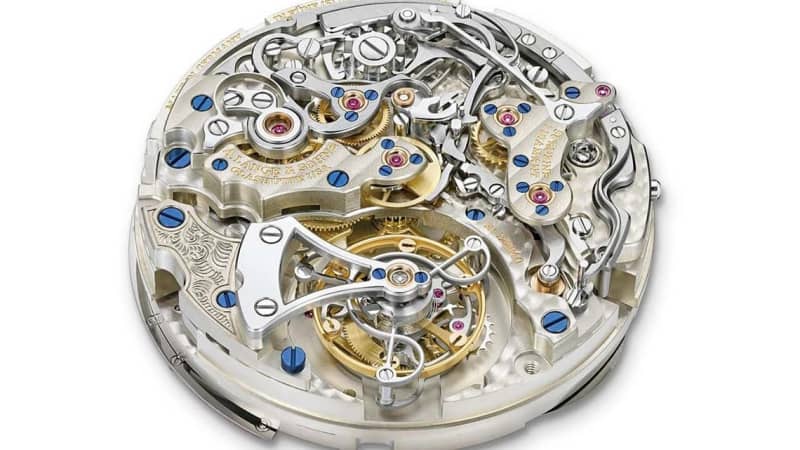
Comparing these various types of movements requires an examination of factors such as accuracy, power consumption, and price.
Mechanical movements, while often admired for their craftsmanship and intricate design, usually require regular maintenance and may be less accurate than their electronic counterparts.
Electronic movements, particularly quartz, are renowned for their accuracy and low power consumption, making them a popular choice for many modern clocks.
However, they lack the charm and heritage associated with mechanical movements.
In terms of price, mechanical movements tend to be more expensive due to their complex construction and the expertise required to manufacture and maintain them.
Electronic movements, especially quartz, are generally more affordable and accessible.
Ultimately, the choice between mechanical and electronic movements depends on the intended use case and personal preference.
For those who appreciate the artistry and tradition of horology, a mechanical movement may be the ideal choice.
Conversely, individuals seeking a reliable, low-maintenance, and cost-effective solution may opt for an electronic movement.
To make the best decision that fits one’s needs and interests, it’s important to have a thorough understanding of the details and subtle differences of each type of movement.
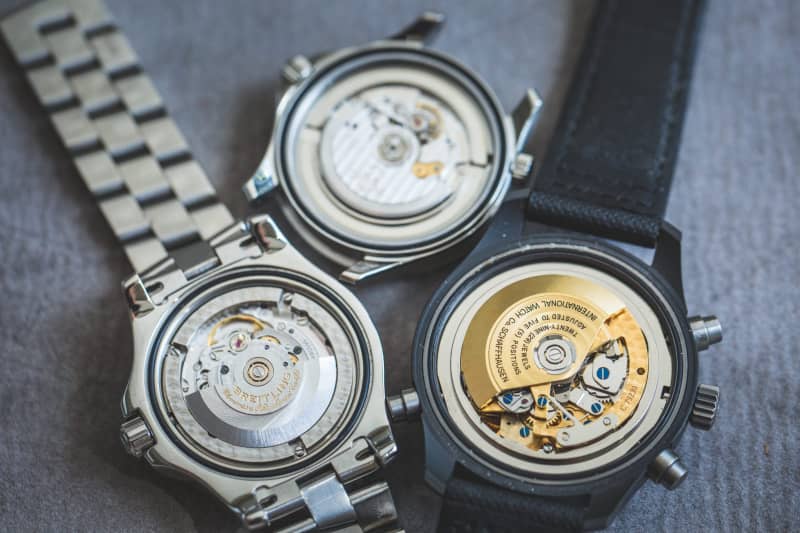
Wrenches are indispensable hand tools used in the realm of clocks and watches.
Clock and watchmakers rely on a variety of wrenches to handle different tasks, such as adjusting or removing nuts, bolts, and screws.
These wrenches are designed with precision and care to ensure a secure grip on the various components without causing damage.
Common types of wrenches include open-end wrenches, which feature two parallel jaws for gripping, and adjustable wrenches, which can be adjusted to fit different sizes of nuts and bolts.
Tweezers play a crucial role in the intricate work of clock and watch repair.
These small, precise tools are designed to manipulate and handle delicate components with utmost accuracy.
Clock and watchmakers use tweezers to carefully position, hold, and manipulate tiny screws, springs, and other delicate parts.
Tweezers come in various shapes, sizes, and materials, such as stainless steel or antimagnetic alloys, to suit different tasks and to ensure they do not cause any damage or magnetize sensitive components.
Loupe magnifiers are essential for the detailed examination and inspection of the clock and watch components.
These specialized magnifying devices are available in different magnification strengths, allowing clock and watchmakers to closely inspect and identify intricate details, such as markings, engravings, or hairline cracks on components.
Loupe magnifiers are typically small, handheld devices that offer precise and distortion-free magnification, enabling technicians to carry out intricate repairs and adjustments with heightened accuracy.
Testers are crucial tools used in clock and watch maintenance to assess and evaluate the performance and accuracy of timekeeping.
These devices come in various forms, such as timing machines or electronic testers, and allow clock and watchmakers to measure and analyze factors like accuracy, beat rate, amplitude, and power reserve.
Testers enable technicians to diagnose issues, fine-tune adjustments, and ensure the timekeeping accuracy of clocks and watches.
They are invaluable tools in maintaining the precision and reliability of timepieces.
Timekeeping irregularities pose a common challenge in the world of clock and watch repair, requiring skilled technicians to diagnose and rectify timing issues.
A variety of factors can contribute to these irregularities, such as misaligned or worn-out components, imbalances in the escapement mechanism, or even magnetic interference.
To tackle these issues, experienced repair professionals employ various techniques.
For instance, they may meticulously adjust the balance wheel’s poise or regulate the escapement to ensure precise timekeeping.
In scenarios where the timepiece runs too fast or slow, they may need to carefully manipulate the hairspring or make fine adjustments to the gear train.
Additionally, electronic timekeeping devices, such as quartz watches, might require battery replacement or recalibration to maintain accurate timekeeping.
Through their expertise and diagnostic tools, skilled technicians restore the precision of timepieces, ensuring they tick away with reliable accuracy.
Misaligned or damaged watch hands and dials often cause timepieces to be inaccurate and unappealing.
Clock and watchmakers employ several techniques to diagnose and fix these issues, relying on their experience, as well as special tools and equipment.
For example, experienced technicians use specialized tweezers, pliers, or jigs to carefully remove misaligned hands before replacing them with new ones.
Similarly, they might use loupe magnifiers to closely examine the dials for chips or markings before cleaning them up with a soft cloth.
In cases where the hands are stuck due to wear on the axle hole of the arbor or an accumulation of dirt, technicians must delicately adjust these components to free them up, before reinstalling and testing the restored parts.
Through their precision and expertise, clock and watchmakers can ensure that timepieces display accurate readings in an aesthetically pleasing manner.
Mechanical movements lie at the heart of clocks and watches, and repair technicians need to possess the expertise to identify and rectify issues with gears and springs.
These intricate mechanisms are susceptible to wear and damage over time, which can lead to timekeeping irregularities or complete malfunction.
Skilled professionals meticulously examine the gears, ensuring their alignment, proper lubrication, and tooth engagement. They may replace worn-out gears or repair damaged teeth to restore smooth and accurate movement.
Similarly, springs, such as the mainspring or hairspring, demand careful inspection and adjustment.
Technicians assess the tension, condition, and positioning of these springs, making necessary adjustments to achieve optimal performance.
The hairspring, in particular, requires delicate manipulation to ensure its concentricity and proper isochronism.
Through their expertise in identifying and rectifying gear and spring issues, repair technicians breathe new life into mechanical timepieces, enabling them to operate with the precision and reliability they were designed for.
Water resistance is a crucial feature in modern timepieces, protecting them from potential water damage.
However, over time, seals and gaskets may deteriorate or become compromised, compromising the watch’s water resistance.
Technicians who are skilled in watch repair have the necessary tools and knowledge to evaluate and repair the water resistance of watches.
The watch is thoroughly checked for any damage or wear that may affect its water resistance.
This includes examining the case, crown, pushers, and crystal. Seals and gaskets are also inspected and replaced if needed to ensure a secure seal.
In some cases, the watch may need to undergo pressure testing to verify its water resistance level.
Repair professionals not only fix watches but also educate owners on proper maintenance.
This includes regular checks and avoiding activities that exceed the watch’s water resistance rating.
Technicians assess and restore the waterproofing integrity to preserve the watch’s longevity and functionality. This gives watch owners peace of mind even in wet or aquatic environments.
Crystal and case repair is a delicate task, requiring precision and expertise.
Repair professionals must thoroughly inspect the crystal for any chips, scratches, or other damage that may be interfering with its clarity and appearance.
In cases of severe damage, technicians will need to replace the crystal entirely to restore the watch’s aesthetic appeal.
Similarly, they assess and analyze the condition of the watch case, verifying its alignment and any signs of wear.
Parts such as the bezel, crown tube, and stem are inspected thoroughly for any loose screws or misalignment issues.
If necessary, these components can be replaced or readjusted for better performance.
Additionally, technicians may refinish or polish casings to restore their original luster.
Repair professionals also take special care to ensure that all gaskets are snugly installed in their respective grooves before sealing them securely with silicone grease or adhesives.
This extra step ensures a tight seal between the caseback and crystal so that water won’t leak inside the watch’s movement.
Technicians can maintain a timepiece’s precision performance and aesthetic integrity by ensuring accuracy in both crystal replacement and case repair processes.
The power source is an important component of a watch and its performance.
Battery replacement is one of the tasks performed by repair technicians to maintain accuracy and reliability in timepieces.
A technician must have the necessary tools and expertise to open a watch caseback, safely remove the battery, and replace it with a new one.
They must also inspect the contacts and terminals for any signs of corrosion or damage before replacing the battery.
In some cases, the watch may suffer from internal faults that require more advanced troubleshooting methods than just replacing the battery.
Through careful observation and analysis, technicians can identify such faults and then determine if they require further repairs or replacement parts for proper functioning.
In addition to batteries, technicians may also need to fix or replace other power sources like solar cells or automatic movements in certain watches.
Watch repair professionals ensure that timepiece owners always get accurate timing from their watches by offering prompt and efficient solutions to battery-related problems.
Watch bands and bracelets are important components of a timepiece, providing comfort and support while wearing the watch.
However, they can become damaged or worn over time due to regular use or environmental factors such as humidity or temperature changes.
To maintain optimal performance and appearance, it’s essential to regularly inspect these components for any signs of wear or damage.
For those who don’t have the skill set required to perform band/bracelet repairs themselves, professional watch repair technicians provide a valuable service by ensuring that these parts are in good condition at all times.
They adjust straps so they fit snugly on the wrist without feeling too tight or loose:
Complications and functions are the more advanced features of a watch, including chronographs, alarms, calendars, split-second hands, and moon phase indicators.
Repair technicians must be knowledgeable about these complex components to diagnose any issues and restore them to their proper functioning state.
They assess the watch’s condition by testing its various features for accuracy and functionality.
Through careful troubleshooting, they identify problems such as inaccurate timekeeping or incorrect display information.
Then, using specialized tools and parts, they dismantle each component carefully before replacing any damaged parts or repairing worn-out mechanisms.
Finally, technicians reassemble all components into place before verifying that the watch is accurately keeping time and displaying all information accurately.
Lubrication and cleaning are essential aspects of watch repair, as it ensures the smooth movement and longevity of the timepiece.
A technician must have a thorough knowledge of how to properly lubricate delicate components like wheels, cogs, and gears with precision oils.
Cleaning is also an important step to keep dust and dirt particles from entering the watch’s mechanism and causing wear or damage.
By brushing away dirt buildup on the caseback or bracelet links, technicians can ensure that these parts are in good condition.
Furthermore, they use ultrasonic cleaners to remove any debris from internal parts such as dials, hands, springs, and escapements.
With proper lubrication and cleaning techniques, a technician can restore the functionality and accuracy of a watch while maintaining its aesthetic beauty for years to come.
Vintage timepieces require special care and attention when it comes to repair.
Expert watchmakers must be highly knowledgeable about the mechanics of antique clocks and watches, with extensive experience in handling these delicate items.
They must also possess the right tools for disassembling and reassembling complex components without causing any damage to them.
Also, they need to understand how the internal mechanisms operate to identify any problems and properly diagnose the issue.
Vintage watch repair technicians often have access to rare parts that are not available on the market today, which allows them to restore these valuable items to their original state.
With patience, dedication, and skillful craftsmanship, expert technicians can ensure that vintage timepieces retain their timeless beauty for many years to come.
Watch recycling and refurbishment is a complex process that requires expertise and precision.
It involves the disassembly of the watch while preserving all parts, movement repair and replacement with high-quality spare parts, dial modification and restoration while preserving the original design, and waterproofing testing to ensure that the watch functions properly.
This process allows for watches to be recycled in an eco-friendly way, allowing them to be enjoyed for years to come.
Recycling watches is beneficial in many ways.
Not only does it help reduce waste, but it also allows people to enjoy luxury watches without having to purchase new ones.
Additionally, by recycling watches, you can save money on buying a new one while still getting the same quality product.
Refurbishing watches also helps preserve their original beauty as well as their functionality.
When it comes to watching recycling and refurbishment, some best practices should be followed.
By following these best practices when recycling or refurbishing watches, you can help reduce waste while still enjoying luxury timepieces at a fraction of their original cost.
Additionally, you can help preserve their original beauty while ensuring they remain functional for years to come.
The intricate mechanism of each watch is a work of art. Every luxury watch has its level of craftsmanship and quality. Each is created artistically by expert watchmakers making the timepiece have an elegant design and accurate timekeeping. But, luxury watch collectors prefer mechanical or automatic movements. Let yourself fall into one of the types of a watch movement and share your ideas below if you have different insight!
Your email address will not be published. Required fields are marked *

Copyright © 2018 Sofly Limited
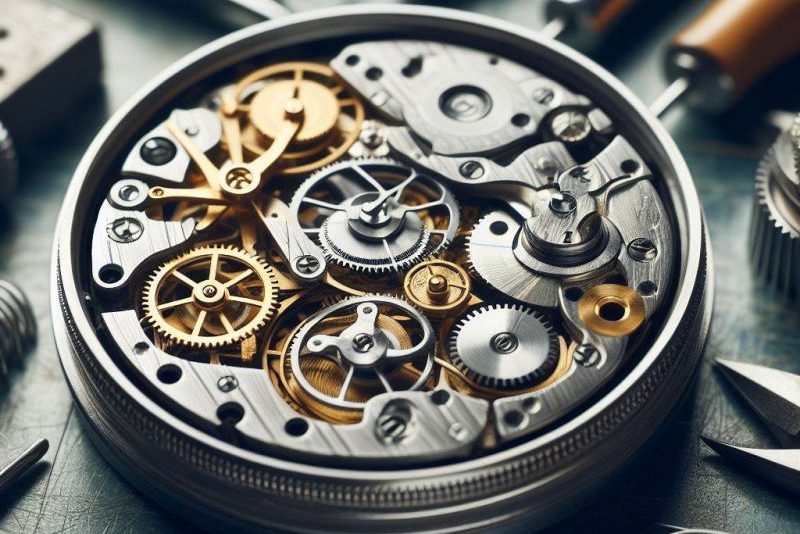
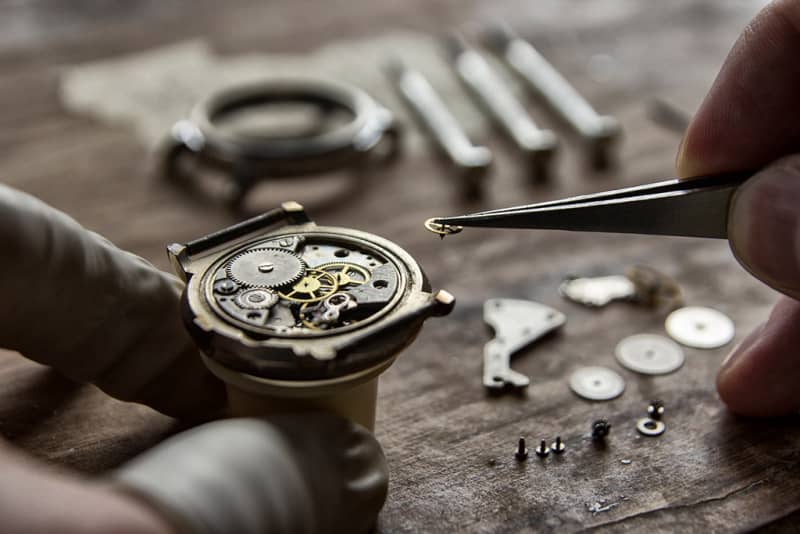
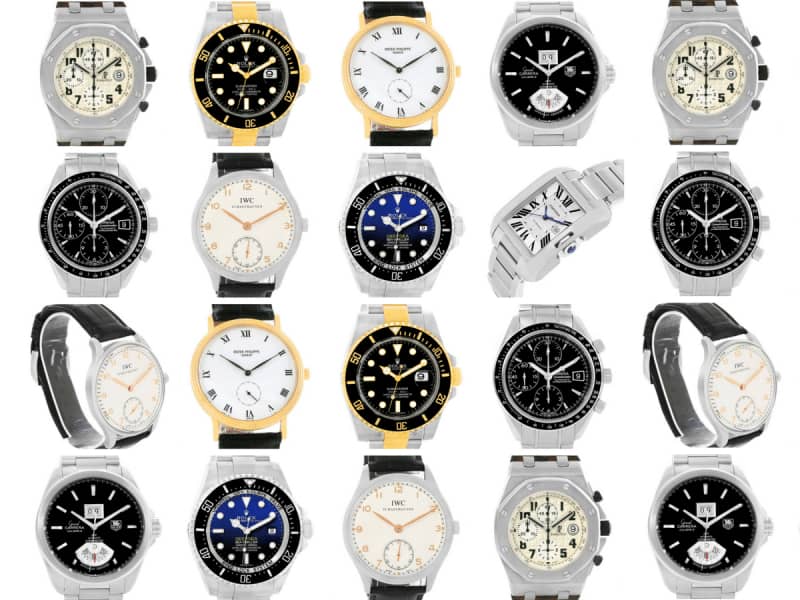
I find it surprising that you could use watch repair to help maintain your timekeeping devices and prolong their lifespan. My friend inherited a couple of pieces from his aging grandpa and a huge grandfather’s clock. I should talk to him about finding a clock shop that can help him with this someday.